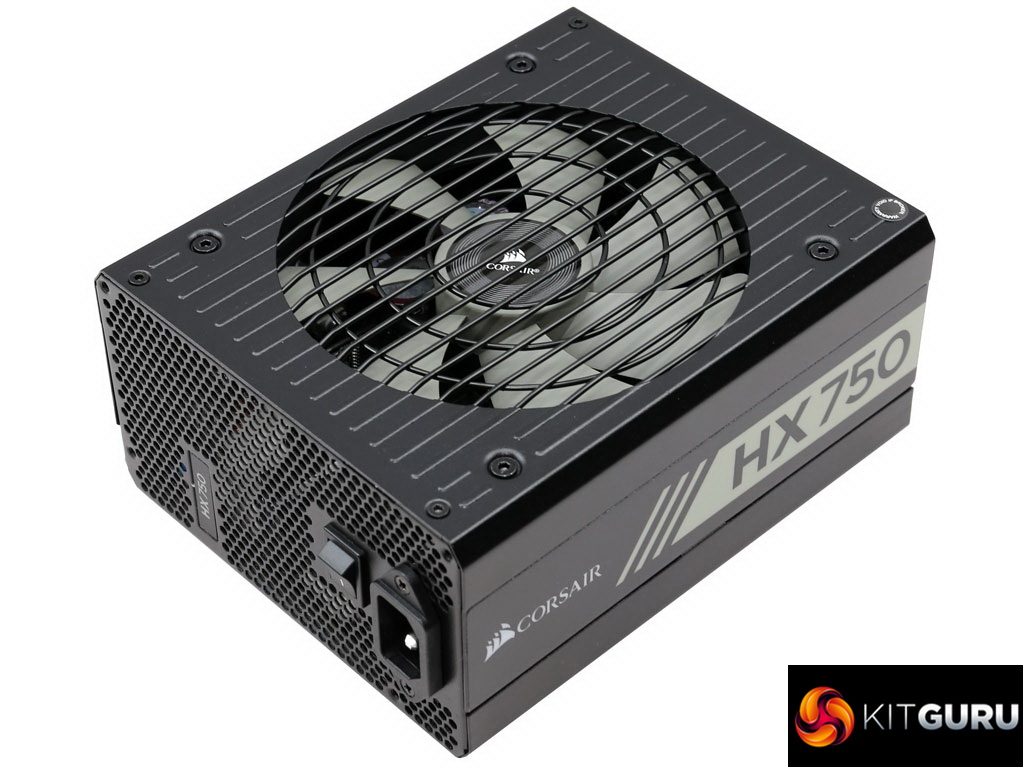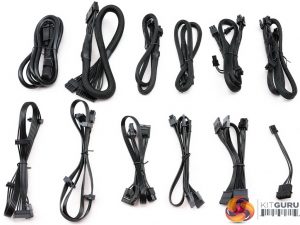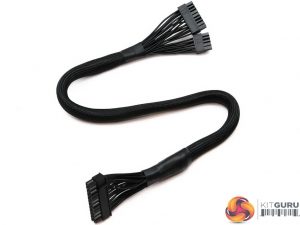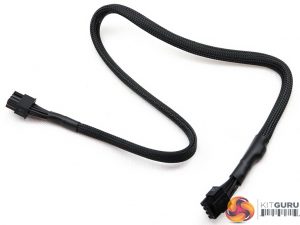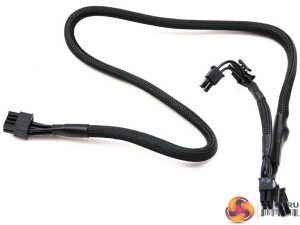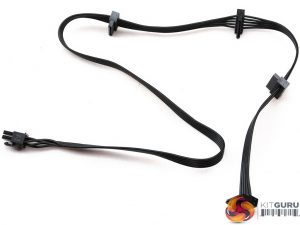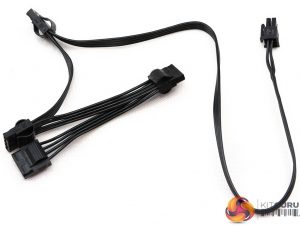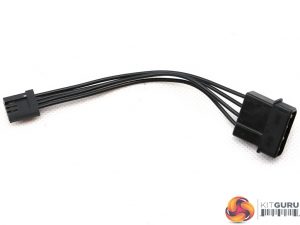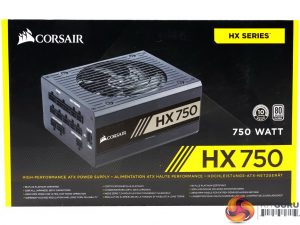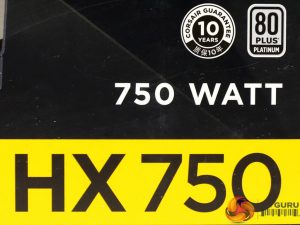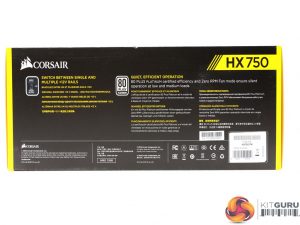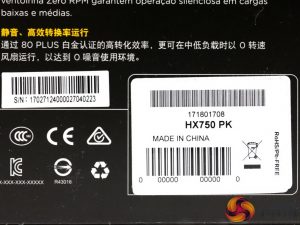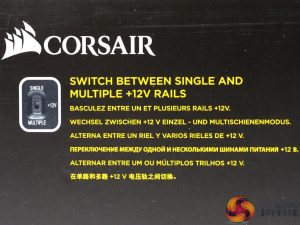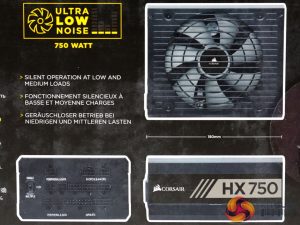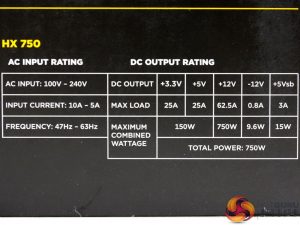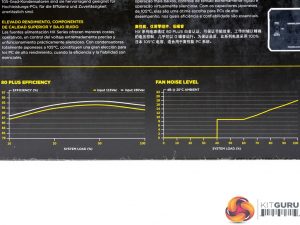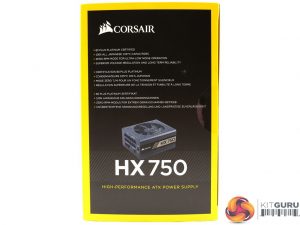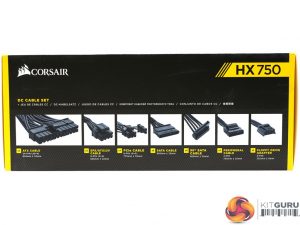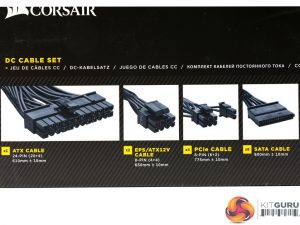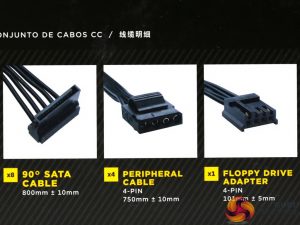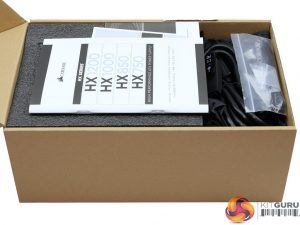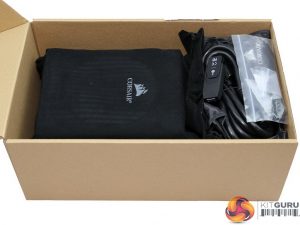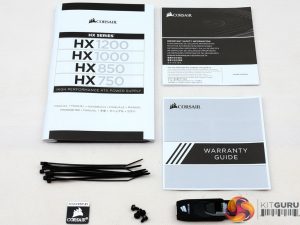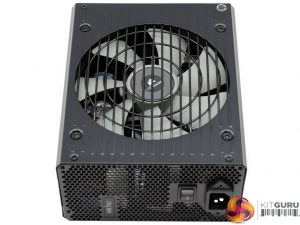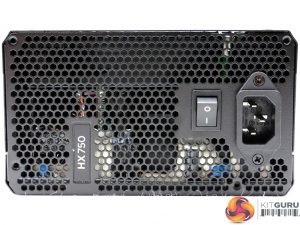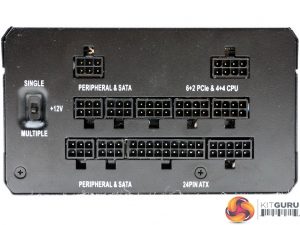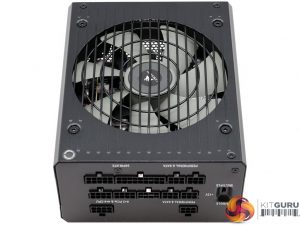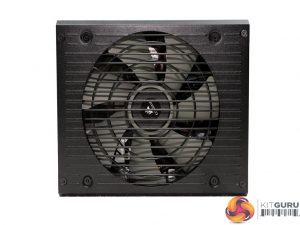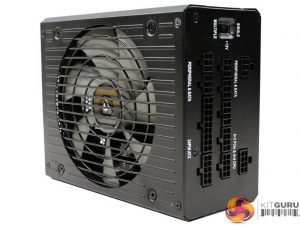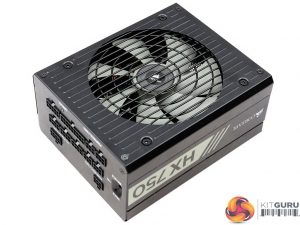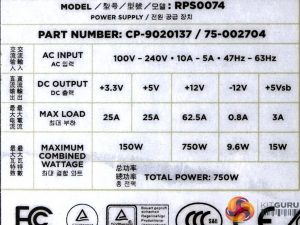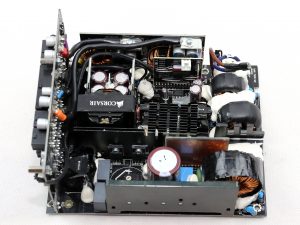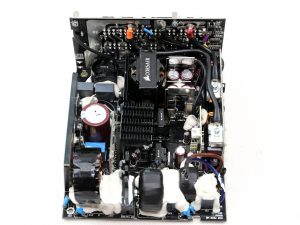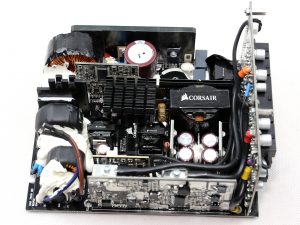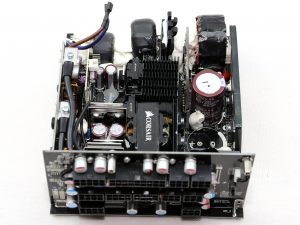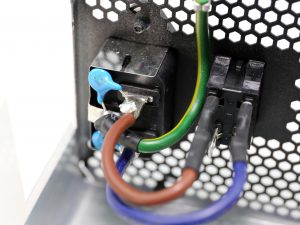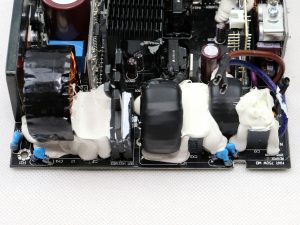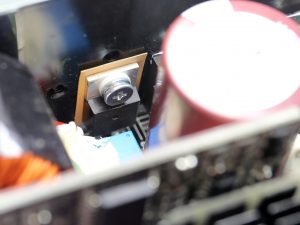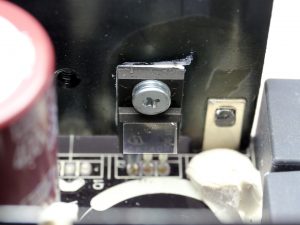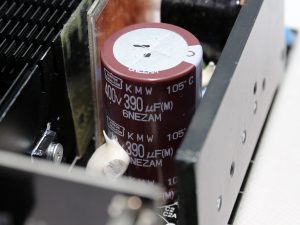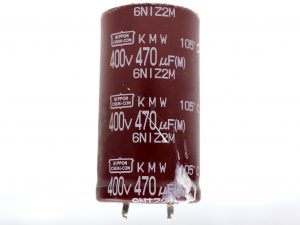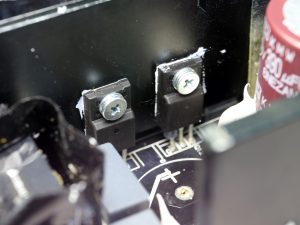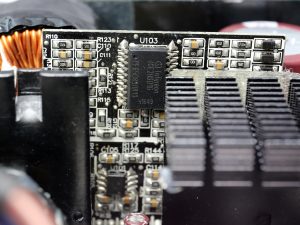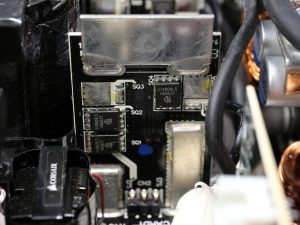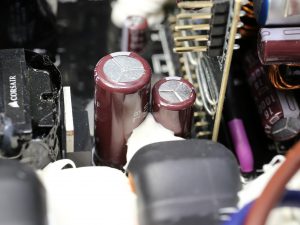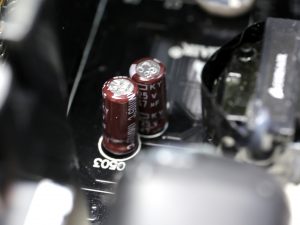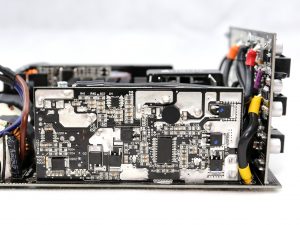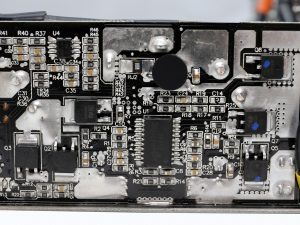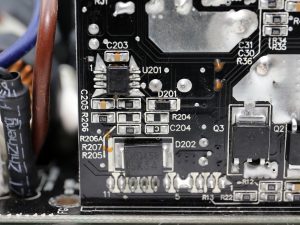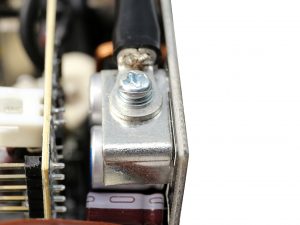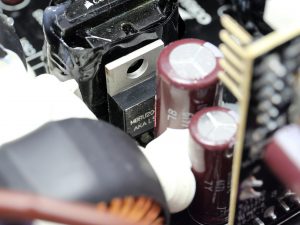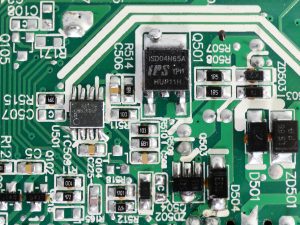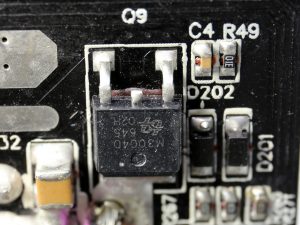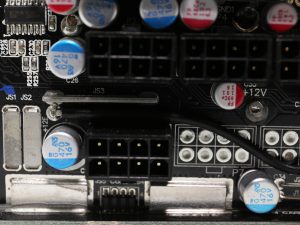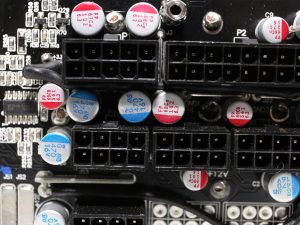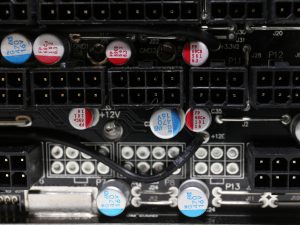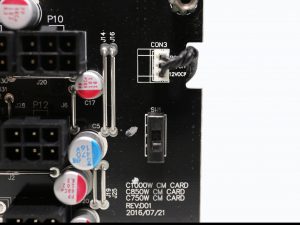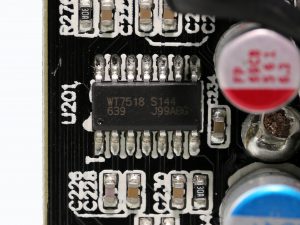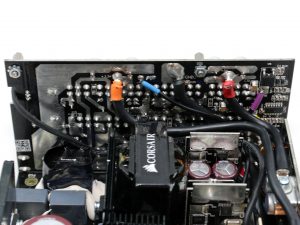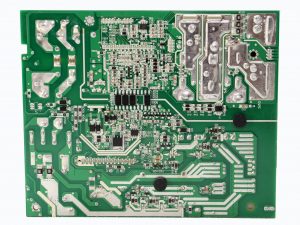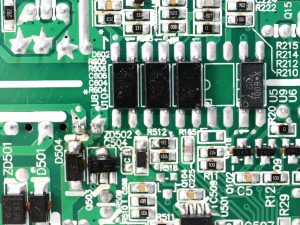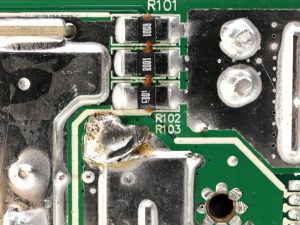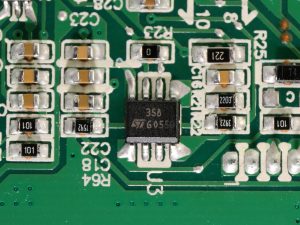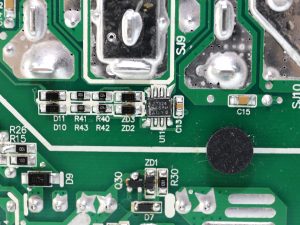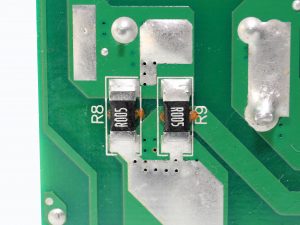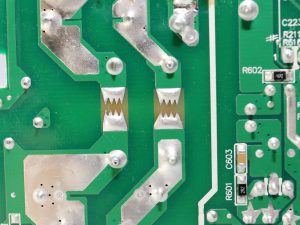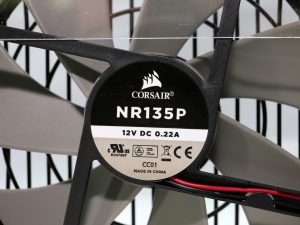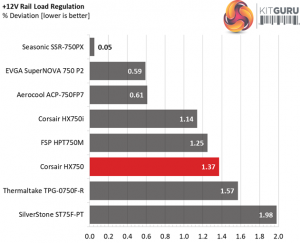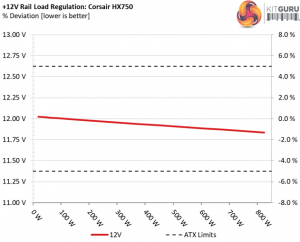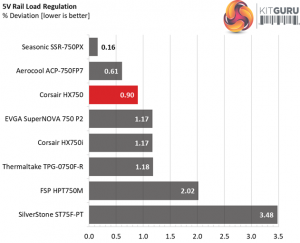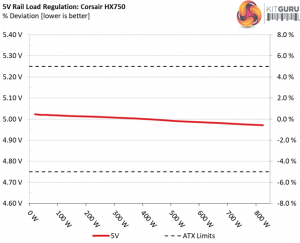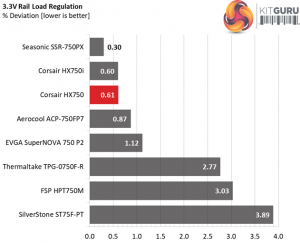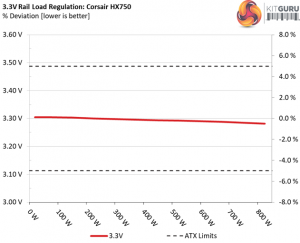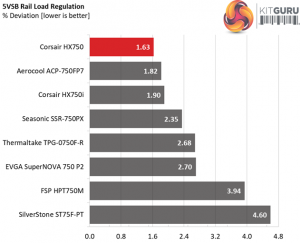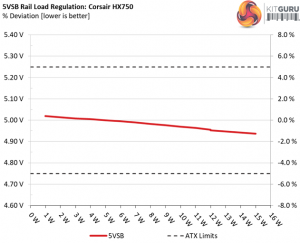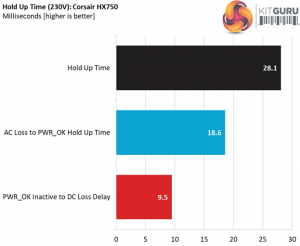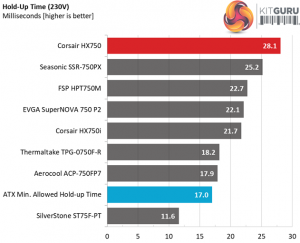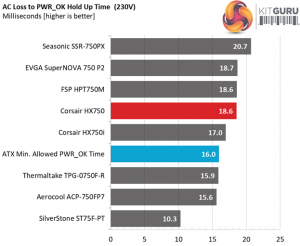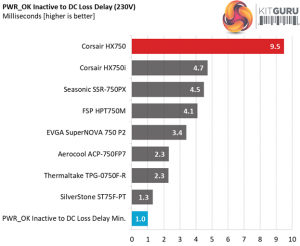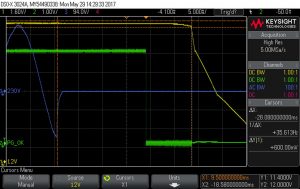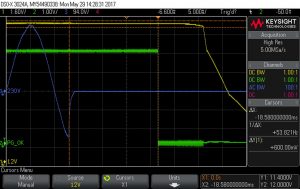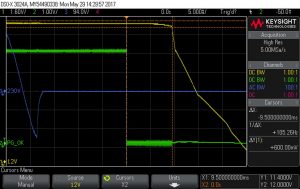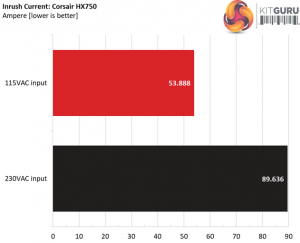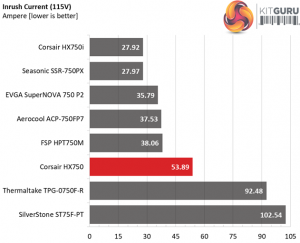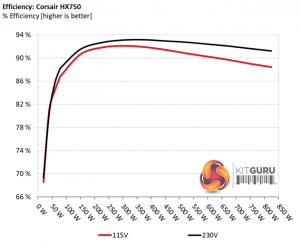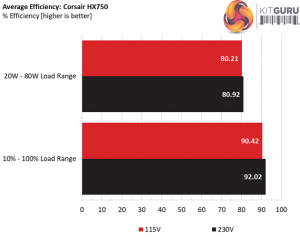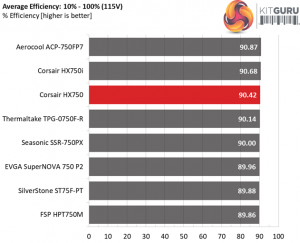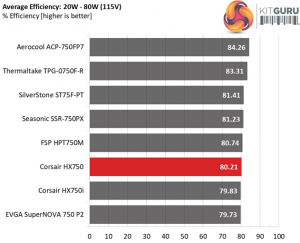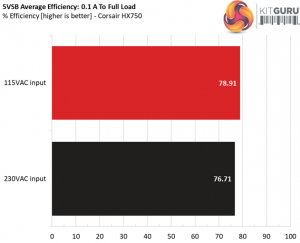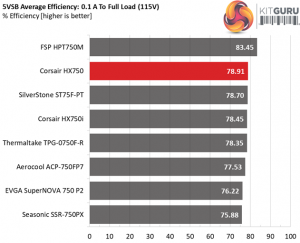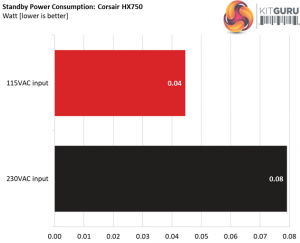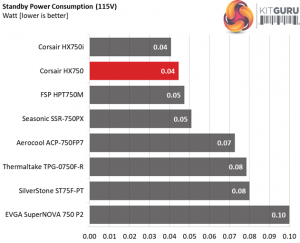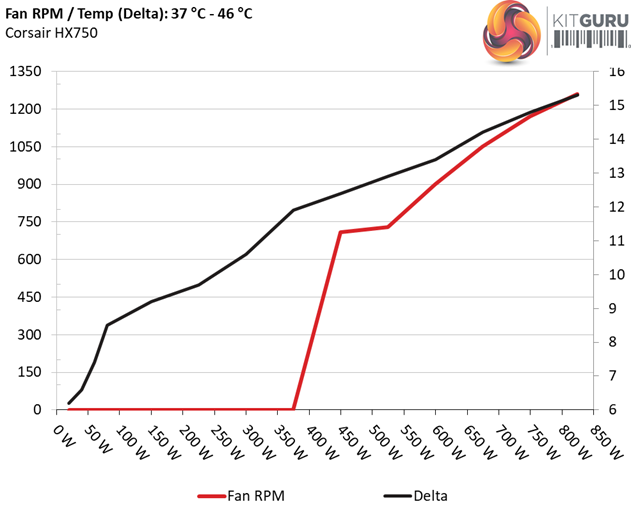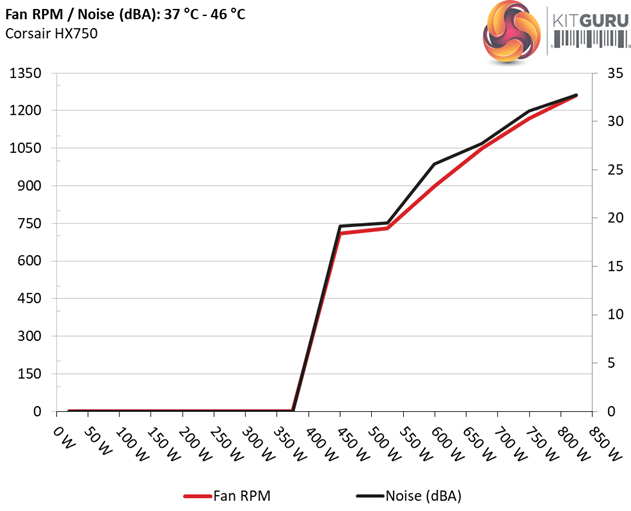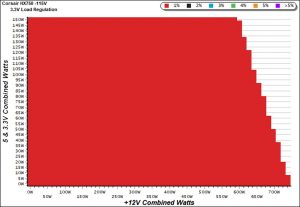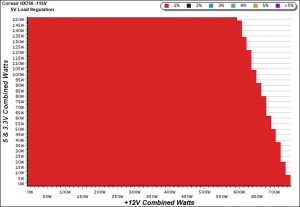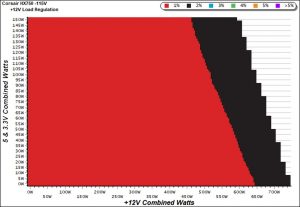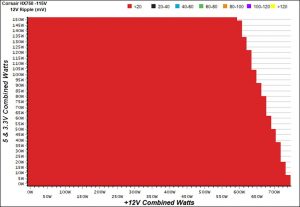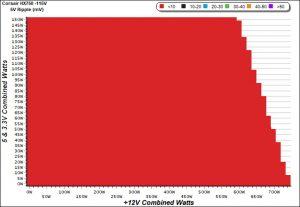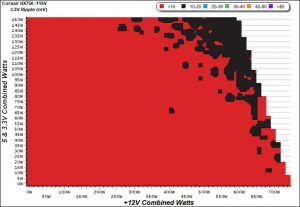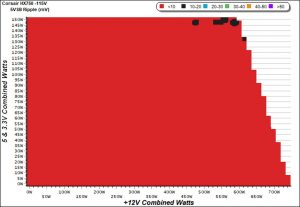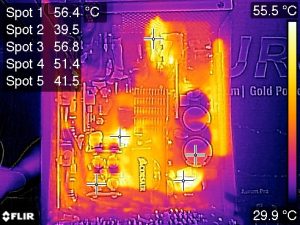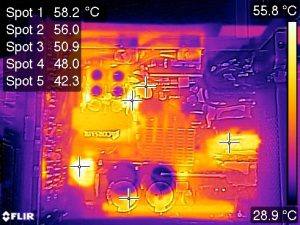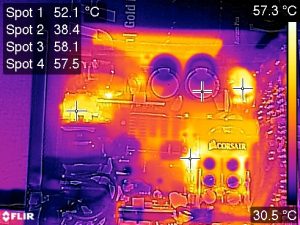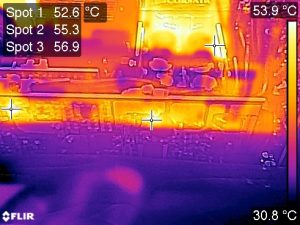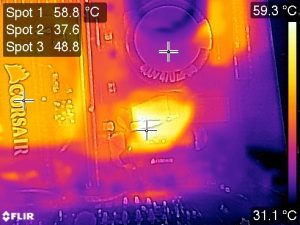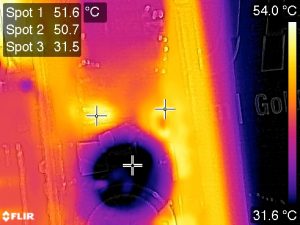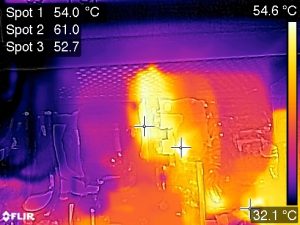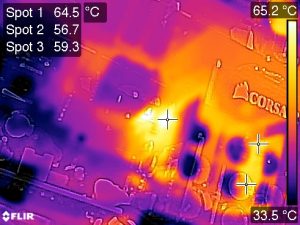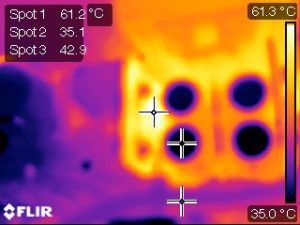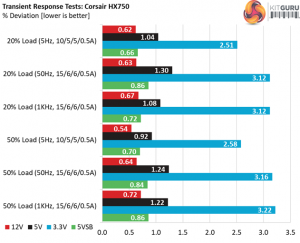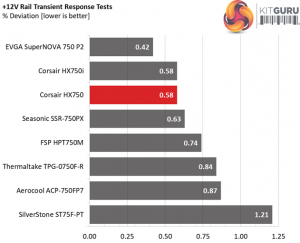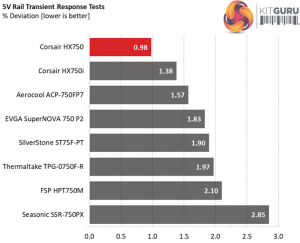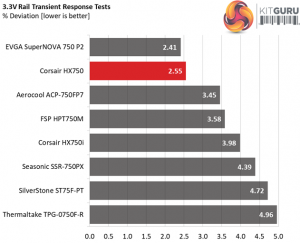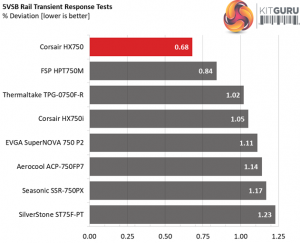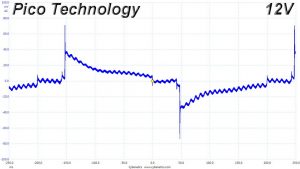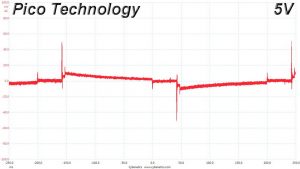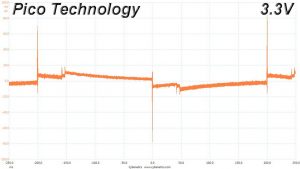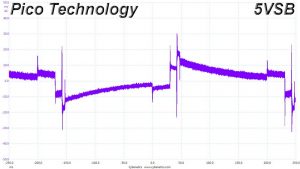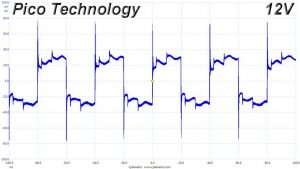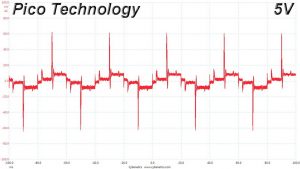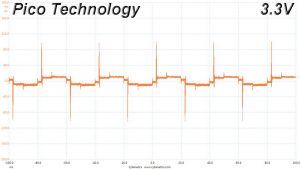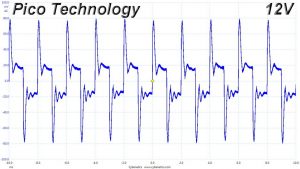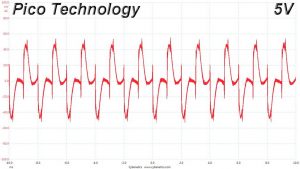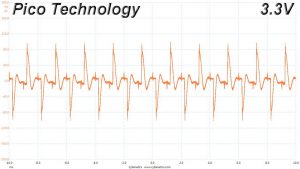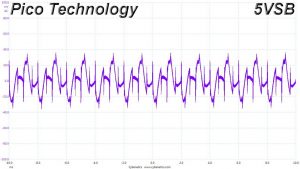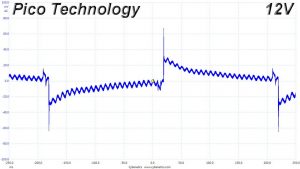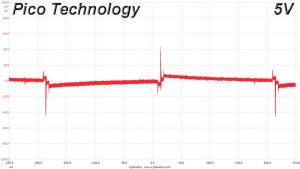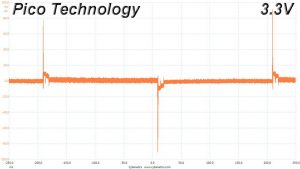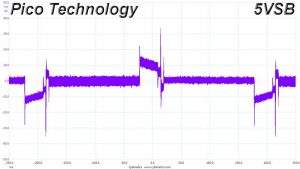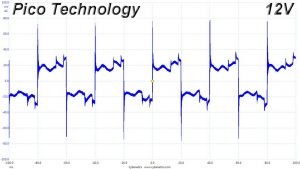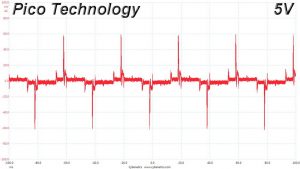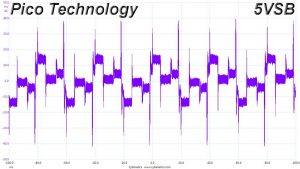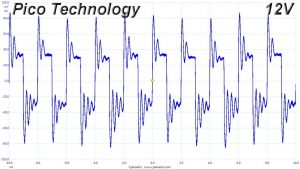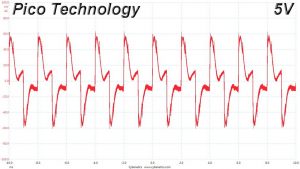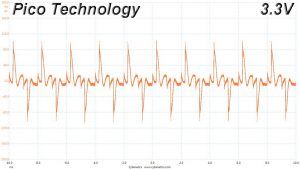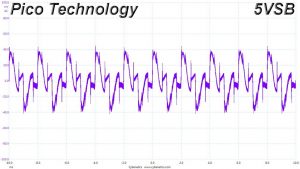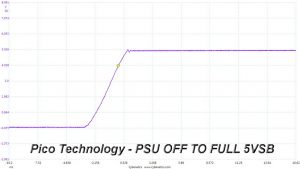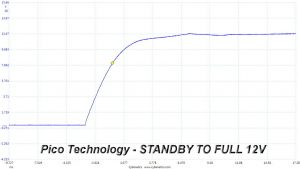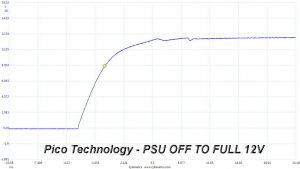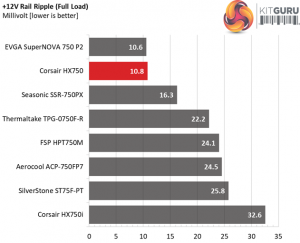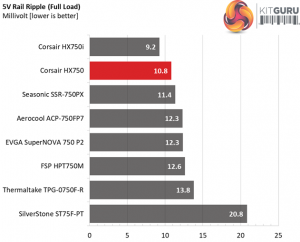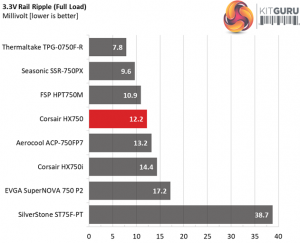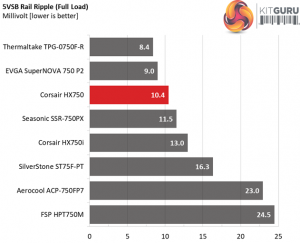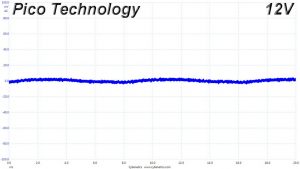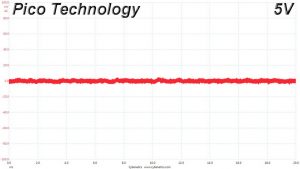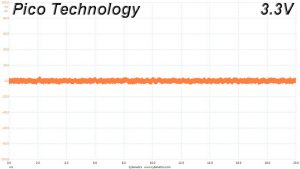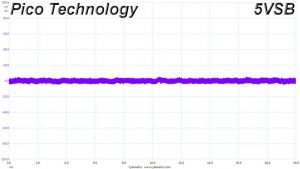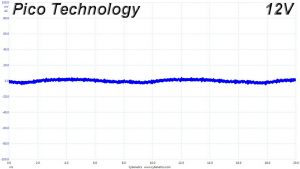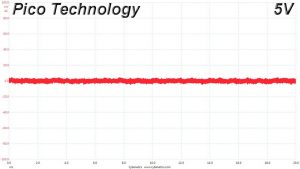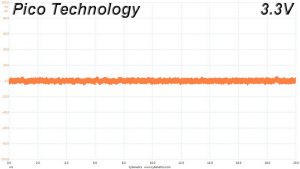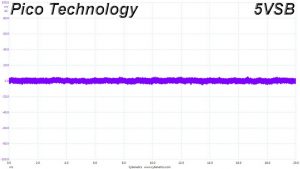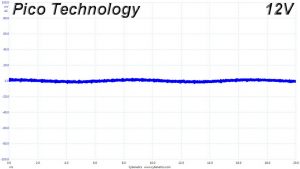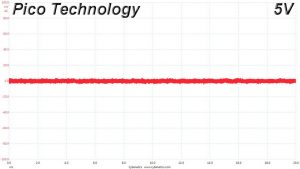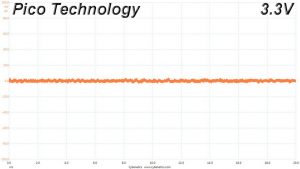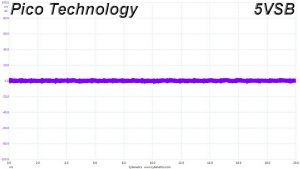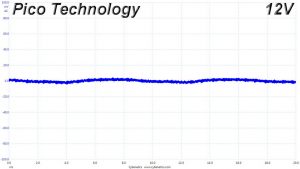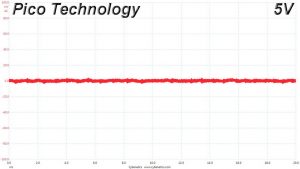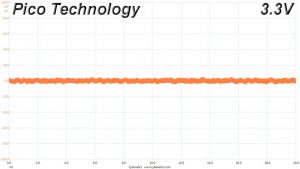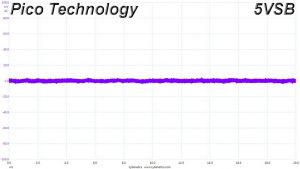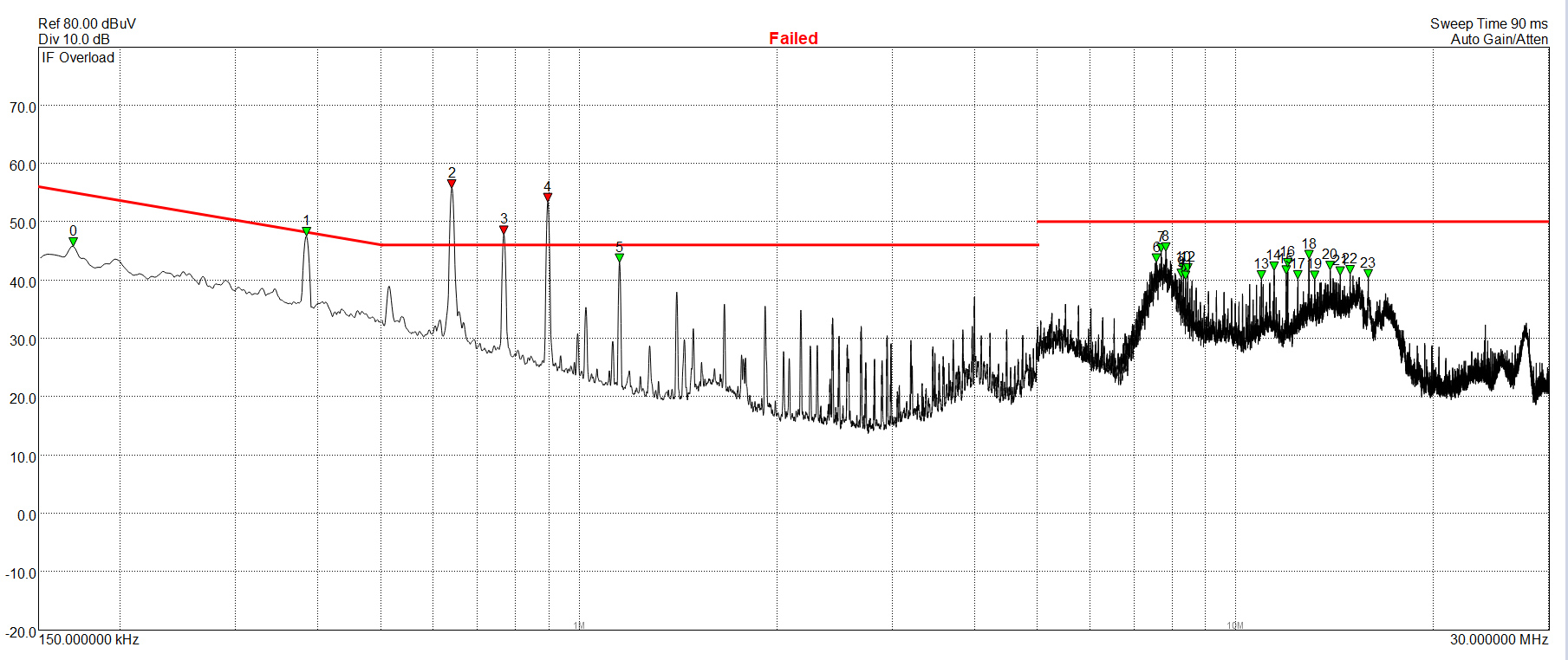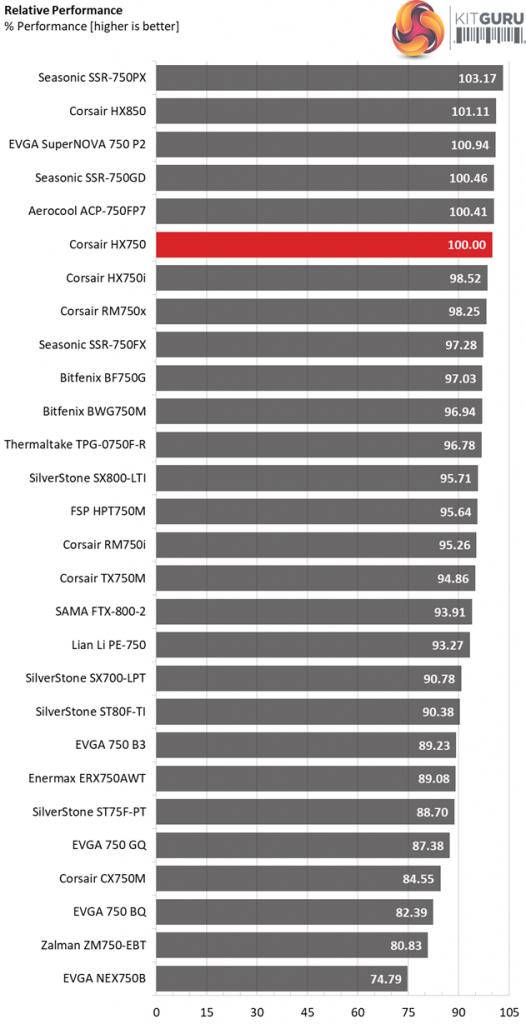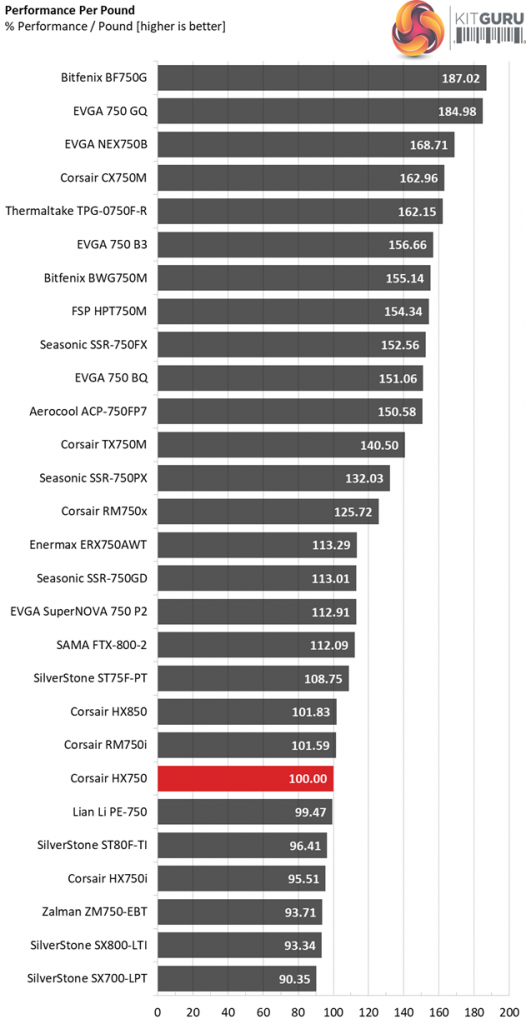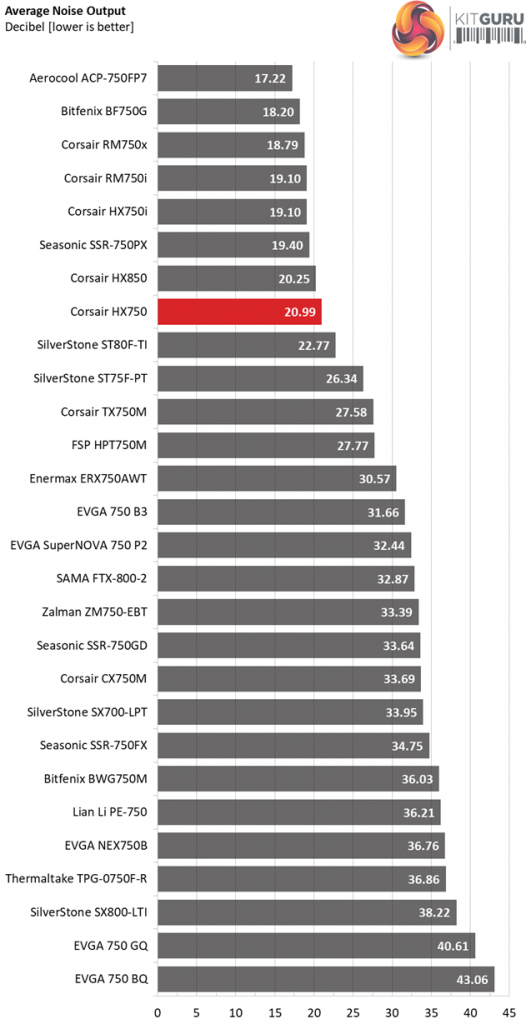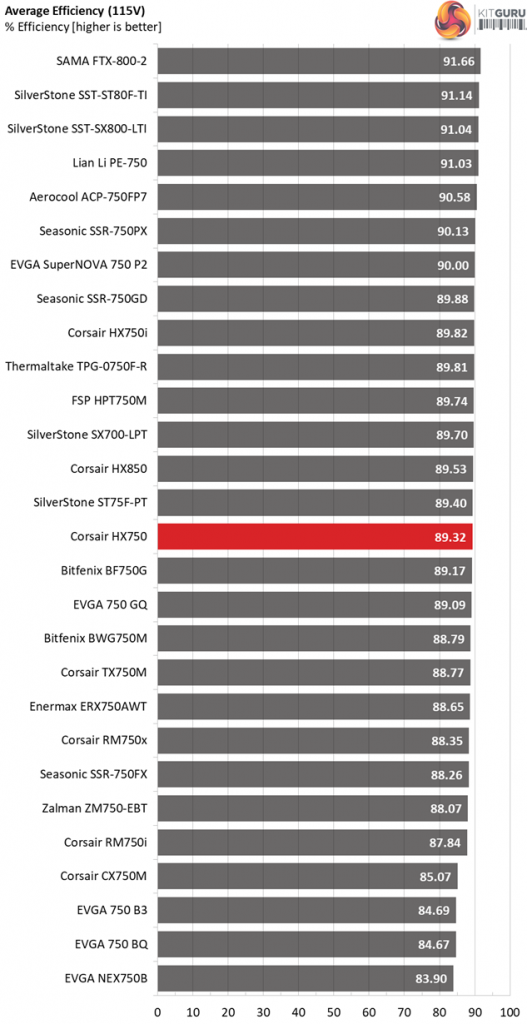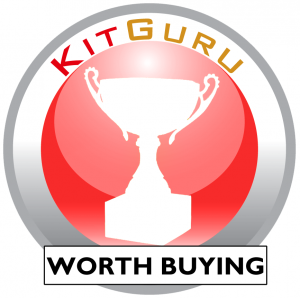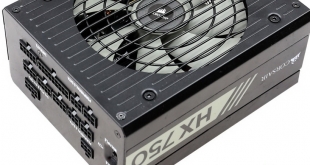
The Corsair HX750 supply is a performance unit, featuring ultra silent operation under all conditions. It belongs to Corsair's high-end PSU category and although it lacks the digital interface of the HXi series, it has similar performance (if not better) and it costs less – so it is ideal for users wanting a reliable power supply who don't care about controlling or monitoring it through software.
Corsair's HX line consists of four supplies with capacities ranging from 750W to 1200W. In today's review we will take a look at the smallest member of the family, the HX750.
This unit features a fully modular cable design and it is also 80 PLUS Platinum certified. In the Cybenetics scale it is ETA-A and LAMBDA-A certified, for efficiency and noise respectively.
Its external design might look boring nowadays, but don't let that fool you. The HX750 offers exceptional performance in all areas and it is among the top picks in the 750W category, giving a hard time even to the supposedly higher-end HX750i that features a digital interface.
The truth is that the majority of users don't care about PSU monitoring and control, so naturally they don't want to pay extra money for those features. This is why models like the RMx and HX are more popular than their digital counterparts, RMi and HXi.
Besides the increased price tags, we believe that the added steps required to install a PSU featuring a digital interface and the complexity of the provided software (although Corsair's Link software in its latest version is pretty easy to use), are two of the reasons behind the low popularity of power supplies featuring a digital interface.
You should take this under consideration though: in fully digital units the digital interface is just an added bonus since the hardware to offer it is already there. This is not the case though with analogue platforms, which just use some digital parts to offer monitoring and a restricted set of control features.
In other words, in fully digital PSUs there is no extra cost for the digital interface, something that doesn't apply of course to modified analogue platforms.
Read our How We Test Power Supplies HERE
Specifications
| Manufacturer (OEM) | Channel Well Technology |
| Max. DC Output | 750W |
| Efficiency | 80 PLUS Platinum, ETA-A (88-91%) |
| Noise | LAMBDA-A (20-25 dB[A]) |
| Modular | ✓ (Fully) |
| Intel C6/C7 Power State Support | ✓ |
| Operating Temperature (Continuous Full Load) | 0 – 50°C |
| Over Voltage Protection | ✓ |
| Under Voltage Protection | ✓ |
| Over Power Protection | ✓ |
| Over Current (+12V) Protection | ✓ |
| Over Temperature Protection | ✓ |
| Short Circuit Protection | ✓ |
| Surge Protection | ✓ |
| Inrush Current Protection | ✓ |
| Fan Failure Protection | ✗ |
| No Load Operation | ✓ |
| Cooling | 135mm Fluid Dynamic Bearing Fan (NR135P) |
| Semi-Passive Operation | ✓ |
| Dimensions (W x H x D) | 150 x 87 x 180mm |
| Weight | 1.95kg (4.3 lb) |
| Form Factor | ATX12V v2.4, EPS 2.92 |
| Warranty | 10 Years |
The original manufacturer (OEM) of the entire HX (and HXi) line is Channel Well Technology or CWT as it is widely known. This is a very good OEM with strong ties to Corsair. The HX750 is highly efficient and silent as well and this is shown by the 80 PLUS Platinum, ETA-A and LAMBDA-A badges that it caries. Moreover, the maximum temperature rating for continuous full load delivery is 50°C, as the ATX spec dictates.
All important protection features are provided, including over temperature protection (OTP) which is essential to any power supply. If the fan breaks or the operating temperature gets too high, OTP will save the day.
The cooling duties are handled by a 135mm FDB fan which is used in the majority of Corsair's high-end units. Finally, the dimensions of the HX750 are on the large side because of the 18cm length. Someone can find now 750W and 850W models with less than 15cm depth.
Power Specifications
| Rail | 3.3V | 5V | 12V | 5VSB | -12V | |
| Max. Power | Amps | 25 | 25 | 62.5 | 3 | 0.8 |
| Watts | 150 | 750 | 15 | 9.6 | ||
| Total Max. Power (W) | 750 | |||||
The minor rails are too strong for today's needs, while the +12V rail can deliver up to 62.5 Amperes if needed. Finally, the 5VSB has 15W capacity, which is sufficient.
Cables & Connectors
| Modular Cables | ||||
| Description | Cable Count | Connector Count (Total) | Gauge | In Cable Capacitors |
|---|---|---|---|---|
| ATX connector 20+4 pin (600mm) | 1 | 1 | 16-20AWG | ✓ |
| 4+4 pin EPS12V (650mm) | 2 | 2 | 18AWG | ✓ |
| 6+2 pin PCIe (680mm+100mm) | 2 | 4 | 16-18AWG | ✓ |
| SATA (500mm+115mm+115mm+115mm) | 2 | 8 | 18AWG | ✗ |
| SATA (500mm+110mm+110mm+110mm) | 2 | 8 | 18AWG | ✗ |
| 4-pin Molex (550mm+100mm+100mm+100mm) | 1 | 4 | 18AWG | ✗ |
| FDD Adapter (+100mm) | 1 | 1 | 20AWG | ✗ |
| AC Power Cord (1420mm) – C13 coupler | 1 | 1 | 16AWG | – |
The HX750 uses Corsair's Type-4 cables which utilize extra filtering capacitors to help in achieving great ripple suppression. The problem with those added caps is that they make the cables bulkier so it is more difficult to work with them, during the cable management process.
We are satisfied by the two EPS and the four PCIe connectors, however some users might expected six PCIe, since this is a high-end 750W unit. The number of SATA connectors is impressive though, while the four 4-pin Molex will be enough for most usage scenarios.
The cable length is satisfactory but the distance between the peripheral connectors is too short, at 10cm only. Normally it should be 15cm at least.
Packaging
The box is large and at the front is an angled photograph of the power supply, along with the 80 PLUS Platinum badge and a second icon depicting the ten-year warranty.
Around the back you will find the power specifications table and a scheme showing the HX750's dimensions. Finally, at the top side of the box Corsair provides a list with the available connectors and the cable length.
At the internals of the box the PSU is well protected by packing foam, and it is also installed into a nice bag. The bundle includes a user's manual which is common across all HX models, a warranty guide, several zip ties, a set of fixing bolts and a case badge.
In our review sample a flash drive was also included, containing the Chroma report for this specific unit. Corsair tends to pretest every sample that goes out for reviewing, making sure that none of them is defective. This shows how much attention this brand pays to reviews and media in general and we highly respect that, since it makes sure that no reviewer will lose precious time on a broken sample.
Exterior
The fan is supported by a semi-passive mode, however unfortunately there is no way to deactivate it should you need the fan to operate constantly. At the front of the unit we find the AC receptacle and the power switch.
At the rear there is a switch for toggling the +12V rail mode on and off. From the factory the power supply comes configured in single +12V rail mode and we suggest to leave it this way.
This is quite a large power supply – its 18 centimeters long. Despite the special design of the fan grill, which allows for increased airflow, we believe that it is high time for Corsair to spend some money on a new chassis and improve the external looks of their units.
|
General Data |
|
|
Manufacturer (OEM) |
CWT |
|
Platform Model |
Custom made for Corsair |
|
Primary Side |
|
|
Transient Filter |
6x Y caps, 2x X caps, 2x CM chokes, 1x MOV |
|
Inrush Protection |
NTC Thermistor & Diode |
|
Bridge Rectifier(s) |
2x |
|
APFC MOSFETS |
2x Infineon IPA50R140CP (550V, 15A @ 100°C, 0.14Ohm) |
|
APFC Boost Diode |
1x CREE C3D08060A (600V, 8A @ 152°C) |
|
Hold-up Cap(s) |
2x Chemi-Con (400V, 470uF & 390uF, 2000h @ 105°C, KMW) |
|
Main Switchers |
2x Infineon IPA50R140CP (550V, 15A @ 100°C, 0.14Ohm) |
|
APFC Controller |
Texas Instruments UCC28070 & CM03X |
|
LLC Resonant Controller |
Infineon ICE2HS01G |
|
Topology |
Primary side: Half-Bridge & LLC Resonant Controller |
|
Secondary Side |
|
|
+12V MOSFETS |
6x Infineon BSC014N04LS (40V, 100A @ 100°C, 1.4mOhm) |
|
5V & 3.3V |
DC-DC Converters: 3x Ubiq QM3004D (30V, 40A @ 100°C, 8.5mOhm), 3x Ubiq QM3006D (30V, 50A @ 100°C, 5.5mOhm) |
|
Filtering Capacitors |
Electrolytics: Nippon Chemi-Con (1-5,000 @ 105°C, KZE), Nippon Chemi-Con (4-10,000 @ 105°C, KY) |
|
Supervisor IC |
Weltrend WT7502 (OVP, UVP, PG, SCP), 2x Weltrend WT7518 (OCP, PG, SCP) |
|
Fan Model |
NR135P (135mm, 12V, 0.22A, Fluid Dynamic Bearing) |
|
Fan Controller |
Microchip PIC16F1503 |
|
5VSB Circuit |
|
|
Mosfet / Rectifier |
1x ISD04N65A (650V, 4A, 2.5Ohm), 1x QM3004D (30V, 40A @ 100°C, 8.5mOhm), 1x MBRU2045CT SBR (45V, 20A @ 125°C) |
|
Standby PWM Controller |
On-Bright OB5269CP |
This is the same platform as the HX850 and HX1000 models – with some minor differences.
At the primary side we see a half-bridge topology along with an LLC resonant converter for increased efficiency. In the secondary side a number of FETs regulate the +12V rail while the minor rails are generated through a couple of DC-DC converters.
The build quality is high and only Chemi-Con electrolytic caps are used … unfortunately not the companies high-end lines but they will do a fine job and sustain good performance through time. Besides electrolytic caps a large number of polymer ones are also utilized.
In the secondary side there are no proper heatsinks, because the +12V FETs are highly efficient so several bus bars are enough to cool them down.
The first part of the transient is on the AC receptacle and it incorporates a couple of Y caps. The same filter continues on the main PCB with four additional Y caps, two X caps, a pair of CM chokes and an MOV (Metal Oxide Varistor) which protects the unit from spikes and voltage overshoots from the mains.
Two bridge rectifiers are used. One of them is totally covered by the while glue that CWT uses in order to avoid coil whine issues and also to secure the PSU's part in place, even under extreme shipping or usage conditions. The HX850 uses two Vishay LVB2560 here.
The APFC converter uses two Infineon IPA50R140CP FETs and a single CREE C3D08060A boost diode. The HX850 features two Infineon IPZ60R125P6 FETs and a CREE C3D10060A in this circuit. The bulk caps of the HX750 have 860uF combined capacity, which provides a long hold-up time.
The main switching FETs are two Infineon IPA50R140CP, which are configured in a half-bridge topology.
A vertical board hosts the LLC resonant controller, an Infineon ICE2HS01G IC. On the same board we also find the APFC controller, an Infineon ICE3PCS01G, and a CM03X Green PFC controller.
In the secondary side two daughter-boards host six Infineon BSC014N04LS. The HX850 has eight of those FETs while the HX1000 has ten.
The electrolytic filtering caps are provided by Chemi-Con and belong to the company's KZE and KY lines. A number of polymer caps is also used for ripple filtering. Those ones are by Chemi-Con and FPCAP, so they are of high quality.
It is worth mentioning here that the KZE are definitely not Chemi-Con's best electrolytic caps, but still they are preferred over Chinese, even Taiwanese, caps with notably better specifications and this is why they are widely used by the majority of high-end Corsair (and not only) PSUs.
Finally, the KZE caps in this unit are supported by a number of KY ones which have better specs and an adequate number of polymer caps which are much more tolerant to tough conditions.
The DC-DC converters use three Ubiq QM3004D and three QM3006D FETs. The common PWM controller is an Anpec APW7159C.
The 5VSB rail is regulated by a ISD04N65A FET and a MBRU2045CT SBR (Schottky Barrier Diode). We also found a QM3004D FET on the modular board which is probably also utilized by this rail. Lastly, the standby PWM controller is an On-Bright OB5269CP.
On the front side of the modular board a large number of FPCAP and Chemi-Con polymer caps provides an extra ripple filtering layer.
The modular board also hosts two Weltrend WT7518s, while a WT7502 is installed on the main PCB. All those three ICs, handle the platform's protection circuits.
The soldering quality is good. CWT keeps high standards in this section.
The fan control circuit uses a Microchip PIC16F1503 IC, which allows for smoother and more detailed control.
The NR1350P (135mm, 12V, 0.22A) fan model is the omnipresent in Corsair's high-end models. It uses a true fluid dynamic bearing and thanks to the highly relaxed fan profile and the semi-passive operation, it won't bother you with loud operating noise even under tough conditions.
To learn more about our PSU tests and methodology, please check out How We Test Power Supply Units.
Primary Rails And 5VSB Load Regulation
Load Regulation testing is detailed here.
Hold-Up Time
Our hold-up time tests are described in detail here.
The oscilloscope screenshots that we took during the hold-up time measurements:
The hold-up time is quite long and the same applies for the period between the power cut and the moment that the PSU informs the mainboard that it needs to shut down, through the power-ok signal.
Inrush Current
For details on our inrush current testing, please click here.
The inrush current is high, with both 115V and 230V input. It might not reach the levels of High Power's platforms, but we would like to see lower readings here.
Load Regulation And Efficiency Measurements
The first set of tests reveals the stability of the voltage rails and the HX750’s efficiency. The applied load equals (approximately) 10 to 110 percent of the power supplies maximum load in increments of 10 percentage points.
We conducted two additional tests.
During the first, we stressed the two minor rails (5V and 3.3V) with a high load, while the load at +12V was only 0.1A. This test reveals whether a power supply is compatible with Intel’s C6/C7 sleep states or not. In the second test, we determined the maximum load the +12V rail could handle with minimal load on the minor rails.
| Test # | 12V | 5V | 3.3V | 5VSB | DC/AC (Watts) | Efficiency | Fan Speed (RPM) | PSU Noise (dB[A]) | Temps (In/Out) | PF/AC Volts |
| 1 | 4.435A | 1.995A | 1.995A | 0.999A | 74.852 | 86.349% | 0 | <6.0 | 46.59°C | 0.966 |
| 12.007V | 5.019V | 3.305V | 5.000V | 86.685 | 38.10°C | 115.14V | ||||
| 2 | 9.920A | 2.988A | 2.993A | 1.201A | 149.811 | 90.650% | 0 | <6.0 | 47.86°C | 0.988 |
| 11.990V | 5.015V | 3.303V | 4.995V | 165.264 | 38.65°C | 115.14V | ||||
| 3 | 15.772A | 3.497A | 3.512A | 1.401A | 224.925 | 91.835% | 0 | <6.0 | 48.58°C | 0.994 |
| 11.972V | 5.011V | 3.300V | 4.989V | 244.924 | 38.86°C | 115.14V | ||||
| 4 | 21.630A | 3.996A | 3.999A | 1.606A | 299.805 | 92.130% | 0 | <6.0 | 50.08°C | 0.995 |
| 11.956V | 5.007V | 3.298V | 4.982V | 325.414 | 39.52°C | 115.13V | ||||
| 5 | 27.166A | 4.990A | 5.003A | 1.805A | 374.718 | 91.934% | 0 | <6.0 | 52.31°C | 0.997 |
| 11.937V | 5.003V | 3.296V | 4.976V | 407.595 | 40.45°C | 115.13V | ||||
| 6 | 32.707A | 6.005A | 6.007A | 2.011A | 449.722 | 91.449% | 710 | 14.7 | 40.92°C | 0.998 |
| 11.922V | 4.997V | 3.294V | 4.970V | 491.774 | 53.36°C | 115.12V | ||||
| 7 | 38.272A | 7.014A | 7.015A | 2.215A | 524.684 | 90.829% | 730 | 13.1 | 41.33°C | 0.998 |
| 11.904V | 4.990V | 3.293V | 4.964V | 577.661 | 54.21°C | 115.12V | ||||
| 8 | 43.849A | 8.027A | 8.023A | 2.420A | 599.645 | 90.271% | 900 | 20.7 | 42.23°C | 0.998 |
| 11.887V | 4.986V | 3.290V | 4.956V | 664.270 | 55.67°C | 115.11V | ||||
| 9 | 49.878A | 8.533A | 8.546A | 2.421A | 674.695 | 89.702% | 1050 | 25.9 | 43.55°C | 0.998 |
| 11.871V | 4.981V | 3.288V | 4.953V | 752.149 | 57.71°C | 115.11V | ||||
| 10 | 55.672A | 9.053A | 9.039A | 3.036A | 749.610 | 89.029% | 1170 | 29.7 | 44.71°C | 0.998 |
| 11.853V | 4.976V | 3.285V | 4.937V | 841.985 | 59.54°C | 115.10V | ||||
| 11 | 62.084A | 9.060A | 9.049A | 3.040A | 824.500 | 88.460% | 1260 | 31.4 | 45.99°C | 0.998 |
| 11.835V | 4.971V | 3.282V | 4.934V | 932.061 | 61.27°C | 115.10V | ||||
| CL1 | 0.100A | 18.026A | 18.002A | 0.005A | 151.066 | 83.694% | 845 | 19.1 | 44.08°C | 0.990 |
| 11.974V | 4.992V | 3.325V | 5.050V | 180.499 | 51.94°C | 115.14V | ||||
| CL2 | 62.457A | 1.004A | 1.004A | 1.002A | 753.774 | 89.514% | 1130 | 28.0 | 44.28°C | 0.998 |
| 11.856V | 4.990V | 3.278V | 4.973V | 842.073 | 52.97°C | 115.11V |
The load regulation at +12V is not the best we have seen, however it isn't bad either. On the minor rails the voltage deviations are lower. When it comes to noise output, the HX750 excels even under tough conditions. Up to the 50% load test the fan remains deactivated and even during the overload test with 110% load, the PSU remains silent enough since it barely exceeds 31 dB(A) noise. Corsair/CWT used a highly relaxed fan profile since this is a highly efficient platform, so the thermal loads are kept load hence there is no need for increased airflow.
With 20% load the 90% mark that the 80 PLUS Platinum standard requires is easily met, while with mid (50%) load the unit is very close to 92%. Finally, with full load the 89% requirement is met, even with 45°C ambient while 80 PLUS performs its evaluations under much lower temperatures (23°C ±5°C).
Efficiency
Our efficiency testing procedure is detailed here.
Using results from the previous page, we plotted a chart showing the HX750’s efficiency at low loads, and loads from 10 to 110 percent of its maximum-rated capacity.
With normal loads the HX750 takes over the third place, while with light loads it is away from the highly efficient Aerocool ACP-750FP7, which is based on Andyson's Titanium platform.
Efficiency At Low Loads
The ATX specification (revision 1.4), along with CEC, ErP Lot 3 2014 and ErP Lot 6 2010/2013, states that the 5VSB standby supply efficiency should be as high as possible, recommending 75 percent or higher with 550mA, 1A, and 1.5A of load.
The supply should also achieve higher than 75% efficiency at 5VSB under full load, or with 3A if its max current output on this rail is higher than 3A.
We take six measurements: one each at 100, 250, 550, 1000, and 1500mA, and one with the full load the 5VSB rail can handle.
| Test # | 12V | 5V | 3.3V | 5VSB | DC/AC (Watts) | Efficiency | Fan Speed (RPM) | PSU Noise (dB[A]) | PF/AC Volts |
| 1 | 1.213A | 0.493A | 0.481A | 0.196A | 19.635 | 68.556% | 0 | <6.0 | 0.840 |
| 12.024V | 5.023V | 3.305V | 5.019V | 28.641 | 115.14V | ||||
| 2 | 2.457A | 0.990A | 0.998A | 0.396A | 39.782 | 81.006% | 0 | <6.0 | 0.931 |
| 12.018V | 5.021V | 3.305V | 5.013V | 49.110 | 115.14V | ||||
| 3 | 3.700A | 1.487A | 1.508A | 5.008A | 59.878 | 84.421% | 0 | <6.0 | 0.954 |
| 12.012V | 5.020V | 3.305V | 5.008V | 70.928 | 115.14V | ||||
| 4 | 4.933A | 1.996A | 1.995A | 0.796A | 79.826 | 86.872% | 0 | <6.0 | 0.969 |
| 12.007V | 5.019V | 3.305V | 5.005V | 91.889 | 115.14V |
With 20W load it would be great to see over 70% efficiency. On the rest three tests the 80% mark is easily passed.
5VSB Efficiency
The ATX specification (revision 1.4), along with CEC, ErP Lot 3 2014 and ErP Lot 6 2010/2013, states that 5VSB standby supply efficiency should be as high as possible, recommending 75 percent or higher with 550mA, 1A, and 1.5A of load. The PSU should also achieve higher than 75% efficiency at 5VSB under full load, or with 3A if its max current output on this rail is higher than 3A.
We take six measurements: one each at 100, 250, 550, 1000, and 1500mA, and one with the full load the 5VSB rail can handle.
| Test # | 5VSB | DC/AC (Watts) |
Efficiency | PF/AC Volts |
| 1 | 0.101A | 0.513 | 76.682% | 0.065 |
| 5.058V | 0.669 | 115.15V | ||
| 2 | 0.252A | 1.272 | 79.649% | 0.147 |
| 5.055V | 1.597 | 115.16V | ||
| 3 | 0.542A | 2.738 | 80.648% | 0.270 |
| 5.049V | 3.395 | 115.16V | ||
| 4 | 1.002A | 5.050 | 80.363% | 0.387 |
| 5.039V | 6.284 | 115.16V | ||
| 5 | 1.502A | 7.552 | 80.187% | 0.453 |
| 5.029V | 9.418 | 115.15V | ||
| 6 | 3.002A | 14.998 | 78.941% | 0.522 |
| 4.996V | 18.999 | 115.14V |
FSP's unit achieves the first place here with a major difference from the second entry, which belongs to the HX750.
Power Consumption In Idle And Standby
In the table below, you'll find the power consumption and voltage values of all rails (except -12V) when the PSU is idle (powered on, but without any load on its rails), and the power consumption when the PSU is in standby mode (without any load, at 5VSB).
| Mode | 12V | 5V | 3.3V | 5VSB | Watts | PF/AC Volts |
| Idle | 12.028V | 5.023V | 3.304V | 5.023V | 8.214 | 0.464 |
| 115.2V | ||||||
| Standby | 0.045 | 0.005 | ||||
| 115.2V | ||||||
The phantom power levels are low, with both 115V and 230V input.
Fan RPM, Delta Temperature, And Output Noise
Our mixed noise testing is described in detail here.
The first chart below illustrates the cooling fan's speed (in RPM), and the delta between input and output temperature. The results were obtained at 37°C (98.6°F) to 46°C (114.8°F) ambient temperature.
The next chart shows the cooling fan's speed (again, in RPM) and output noise. We measure acoustics from one meter away, inside a hemi-anechoic chamber. Background noise inside the chamber is below 6 dB(A) during testing (it's actually much lower, but our sound meter’s microphone hits its floor), and the results are obtained with the PSU operating at 37°C (98.6°F) to 46°C (114.8°F) ambient temperature.
The following graph illustrates the fan's output noise over the PSU's operating range. The same conditions of the above graph apply to our measurements, though the ambient temperature is between 30°C (86°F) to 32°C (89.6°F).
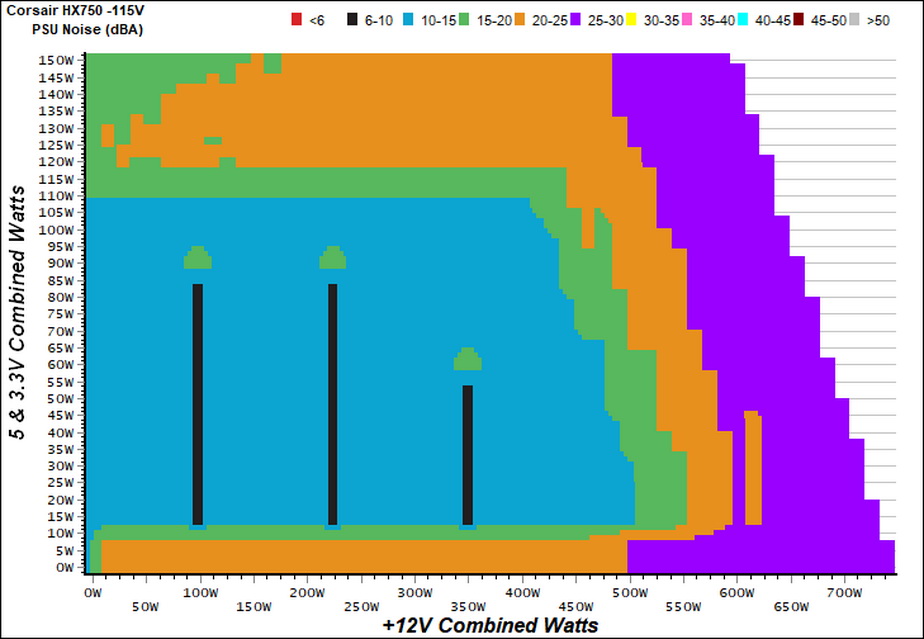
Once you push the minor rails the semi-passive operation is not engaged. This is something that we have noticed in other CWT implementations as well.
Protection Features
Our protection features evaluation methodology is described in detail here.
|
Protection Features |
|
|
OCP |
12V: 74A (118.4%) |
|
OPP |
899.25W (119.9%) |
|
OTP |
✓ (145°C @ Secondary Side) |
|
SCP |
12V: ✓ |
|
PWR_OK |
Proper Operation |
|
NLO |
✓ |
|
SIP |
Surge: MOV |
The over current triggering points of the +12V, 5V and 3.3V rails are set at normal levels, while at 5VSB OCP activates at a very high load, allowing this rail to exceed the 50mV ripple limit that the ATX spec sets.
Similar to OCP on all rails but 5VSB, the over power protection is reasonable set and OTP is triggered when the temperature on the PSU's secondary side hits 145°C. Finally, there is short circuit protection on all rails.
Our cross-load tests are described in detail here.
To generate the following charts, we set our loaders to auto mode through our custom-made software before trying more than 1500 possible load combinations with the +12V, 5V, and 3.3V rails. The load regulation deviations in each of the charts below are calculated by taking the nominal values of the rails (12V, 5V, and 3.3V) as point zero. The ambient temperature is between at 30°C (86°F) to 32°C (89.6°F).
Load Regulation Charts
Efficiency Chart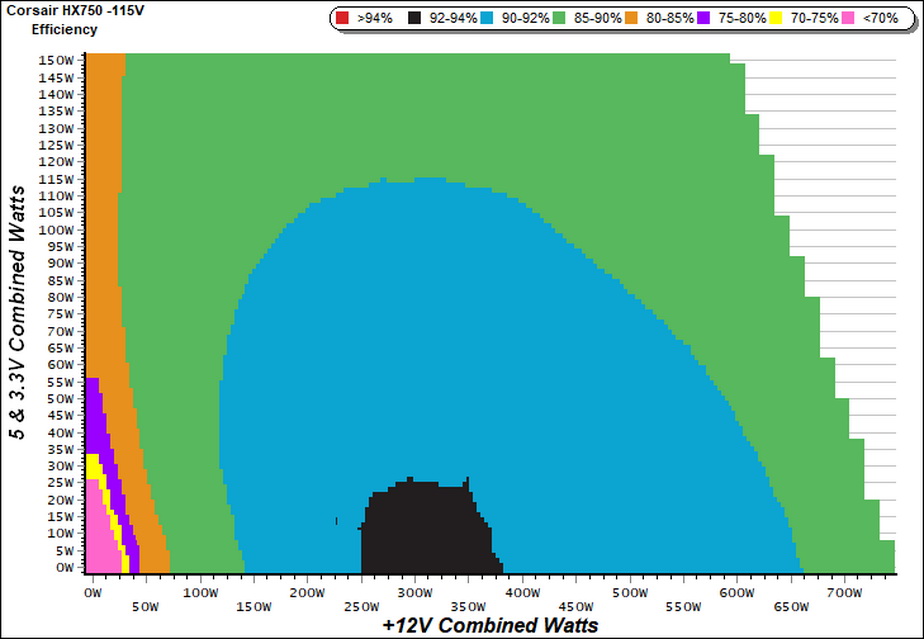
There is small region where efficiency exceeds 92%, between 250W and 390W load at +12V with the load on the minor rails staying pretty low (<25W).
Ripple Charts
Infrared Images
We apply half-load for 10 minutes with the PSU's top cover and cooling fan removed before taking photos with our modified FLIR E4 camera that delivers 320×240 IR resolution (76,800 pixels).
Thanks to the highly efficient FETs that this platform uses, the temperatures at the internals remain at low levels after applying 375W load for a ten minute period.
Advanced Transient Response Tests
For details on our transient response testing, please click here.
These tests are crucial because they simulate the transient loads a PSU is likely to handle (such as booting a RAID array or an instant 100 percent load of CPU/GPUs). We call these “Advanced Transient Response Tests” and they are designed to be very tough to master, especially for a PSU with a capacity of less than 500W.
In all of the tests, we use an oscilloscope to measure the voltage drops caused by the transient load. The voltages should remain within the ATX specification's regulation limits.
Advanced Transient Response at 20 Percent – 200ms
| Voltage | Before | After | Change | Pass/Fail |
|---|---|---|---|---|
| 12V | 11.989V | 11.915V | 0.62% | Pass |
| 5V | 5.013V | 4.961V | 1.04% | Pass |
| 3.3V | 3.303V | 3.220V | 2.51% | Pass |
| 5VSB | 4.995V | 4.962V | 0.66% | Pass |
Advanced Transient Response at 20 Percent – 20ms
| Voltage | Before | After | Change | Pass/Fail |
|---|---|---|---|---|
| 12V | 11.991V | 11.915V | 0.63% | Pass |
| 5V | 5.013V | 4.948V | 1.30% | Pass |
| 3.3V | 3.303V | 3.200V | 3.12% | Pass |
| 5VSB | 4.995V | 4.952V | 0.86% | Pass |
Advanced Transient Response at 20 Percent – 1ms
| Voltage | Before | After | Change | Pass/Fail |
|---|---|---|---|---|
| 12V | 11.992V | 11.912V | 0.67% | Pass |
| 5V | 5.013V | 4.959V | 1.08% | Pass |
| 3.3V | 3.303V | 3.200V | 3.12% | Pass |
| 5VSB | 4.996V | 4.960V | 0.72% | Pass |
Advanced Transient Response at 50 Percent – 200ms
| Voltage | Before | After | Change | Pass/Fail |
|---|---|---|---|---|
| 12V | 11.943V | 11.879V | 0.54% | Pass |
| 5V | 5.000V | 4.954V | 0.92% | Pass |
| 3.3V | 3.296V | 3.211V | 2.58% | Pass |
| 5VSB | 4.976V | 4.941V | 0.70% | Pass |
Advanced Transient Response at 50 Percent – 20ms
| Voltage | Before | After | Change | Pass/Fail |
|---|---|---|---|---|
| 12V | 11.945V | 11.869V | 0.64% | Pass |
| 5V | 5.000V | 4.938V | 1.24% | Pass |
| 3.3V | 3.296V | 3.192V | 3.16% | Pass |
| 5VSB | 4.976V | 4.934V | 0.84% | Pass |
Advanced Transient Response at 50 Percent – 1ms
| Voltage | Before | After | Change | Pass/Fail |
|---|---|---|---|---|
| 12V | 11.946V | 11.860V | 0.72% | Pass |
| 5V | 5.000V | 4.939V | 1.22% | Pass |
| 3.3V | 3.296V | 3.190V | 3.22% | Pass |
| 5VSB | 4.976V | 4.933V | 0.86% | Pass |
This platform's transient response is really good, on all rails. Only Super Flower's Leadex platform is able to meet the HX750's performance in those tests.
Here are the oscilloscope screenshots we took during Advanced Transient Response Testing:
Transient Response At 20 Percent Load – 200ms
Transient Response At 20 Percent Load – 20ms
Transient Response At 20 Percent Load – 1ms
Transient Response At 50 Percent Load – 200ms
Transient Response At 50 Percent Load – 20ms
Transient Response At 50 Percent Load – 1ms
Turn-On Transient Tests
In the next set of tests, we measure the HX750’s response in simpler transient load scenarios—during its power-on phase.
For our first measurement, we turn the HX750 off, dial in the maximum current the 5VSB rail can handle, and switch the PSU back on. In the second test, we dial the maximum load the +12V rail can handle and start the PSU while it is in standby mode.
In the last test, while the PSU is completely switched off (we cut off the power or switch the PSU off through its power switch), we dial the maximum load the +12V rail can handle before restoring power. The ATX specification states that recorded spikes on all rails should not exceed 10 percent of their nominal values (+10 percent for 12V is 13.2V, and 5.5 V for 5V).
There is only a tiny spike at 5VSB and a pretty small voltage drop during the last tests. Overall the performance is great, again.
To learn how we measure ripple, please click here.
The following table includes the ripple levels we measured on the HX750’s rails. The limits, according to the ATX specification, are 120mV (+12V) and 50mV (5V, 3.3V, and 5VSB).
| Test | 12V | 5V | 3.3V | 5VSB | Pass/Fail |
| 10% Load | 5.2 mV | 5.0 mV | 6.0 mV | 4.4 mV | Pass |
| 20% Load | 6.0 mV | 6.0 mV | 6.4 mV | 4.7 mV | Pass |
| 30% Load | 6.6 mV | 6.1 mV | 7.0 mV | 5.1 mV | Pass |
| 40% Load | 7.6 mV | 6.4 mV | 7.0 mV | 5.5 mV | Pass |
| 50% Load | 8.3 mV | 6.7 mV | 7.6 mV | 7.2 mV | Pass |
| 60% Load | 9.4 mV | 7.7 mV | 8.7 mV | 6.8 mV | Pass |
| 70% Load | 7.7 mV | 8.3 mV | 8.9 mV | 7.7 mV | Pass |
| 80% Load | 8.1 mV | 8.4 mV | 9.7 mV | 8.3 mV | Pass |
| 90% Load | 8.3 mV | 9.5 mV | 10.6 mV | 9.3 mV | Pass |
| 100% Load | 10.8 mV | 10.8 mV | 12.2 mV | 10.4 mV | Pass |
| 110% Load | 11.5 mV | 11.2 mV | 12.7 mV | 11.5 mV | Pass |
| Crossload 1 | 9.2 mV | 10.4 mV | 9.2 mV | 7.6 mV | Pass |
| Crossload 2 | 10.1 mV | 8.8 mV | 11.6 mV | 7.9 mV | Pass |
This platform's ripple suppression is amazing. The extra filtering caps on the modular cables help of course.
Ripple Oscilloscope Screenshots
The following oscilloscope screenshots illustrate the AC ripple and noise registered on the main rails (+12V, 5V, 3.3V and 5VSB). The bigger the fluctuations on the screen, the bigger the ripple/noise. We set 0.01 V/Div (each vertical division/box equals 0.01V) as the standard for all measurements.
Ripple At Full Load
Ripple At 110-Percent Load
Ripple At Cross-Load 1
Ripple At Cross-Load 2
To learn more about our EMI testing equipment, please check out How We Test Power Supply Units.
EMI Results – Average Detector
As you can see the HX750 doesn't perform well, since there are many high spurs with three of them exceeding the limit.
EMI Results – Peak Detector
It is very rare to see a PSU failing the peak EMI detector, especially a high-end model.
Performance Rating
The following graph shows the HX750’s total performance rating, comparing it to other units we have tested. To be more specific, the tested unit is shown as 100 percent, and every other unit's performance is shown relative to it.
As you can see in the graph above, the HX750 achieves a higher overall performance score compared to the HX750i, mostly thanks to the Type-4 cables that it uses which feature extra ripple filtering caps. In general this is a very good performing PSU, meeting eye-to-eye the performance of some fresh platforms.
Performance Per Dollar/Buck
The following charts may be the most interesting to many of you because they depict the product’s performance-per-dollar and performance-per-pound scores. We looked up the current price of each PSU on popular online shops and used those prices and all relative performance numbers to calculate the index. Note that all of the numbers in the following graphs are normalized by the rated power of each PSU.
With a 150 bucks price tag, this is not an affordable 750W PSU, so inevitable its performance per buck score is not that high.
In the UK the HX750 is sold for 160 pounds in Overclockers UK, so it is quite expensive.
Noise Rating
The graph below depicts the cooling fan's average noise over the PSU's operating range, with an ambient temperature between 30°C and 32°C (86°F to 89.6°F).
If you need a silent operating system, then this is the suitable power supply.
Efficiency Rating
The following graph shows the PSU's average efficiency throughout its operating range, with an ambient temperature close to 30°C.
Efficiency wise the HX750 goes well, given its official efficiency certifications.
The Corsair HX750 retails for around $150 in the US while in the UK market is sold for £159.95 including VAT from Overclockers UK.
This is definitely not a bargain 750W unit, however it has high overall performance with very good transient response, which is what matters the most in real life conditions. On top of that it is supported by a hefty ten-year warranty.
Compared to the popular RM750x 2018 edition, the HX750 is equipped with more SATA connectors, but on the other hand it has less 4-pin Molex ones. Both models have the same number of EPS and PCIe connectors (please do note that the previous RM750x only had one EPS). Another difference between those two units is the cooling fan: the HX750 uses a fluid dynamic bearing fan while in the RM750x a rifle bearing one is incorporated.
If you can afford it and you want one of the best 750W units, then the HX750 is a solid choice. However there are more affordable options if you don't want to spend so much including the RM750x, and the Seasonic Focus Gold and Platinum Plus models. All afore mentioned PSUs besides much more affordable also have compact dimensions, which will definitely make the installation process easier. 
With the only exception being the not top-notch load regulation, the HX750 offers exceptional performance, however it carries a high price tag and from the moment someone can get the similar capacity Seasonic Focus Plus Platinum, featuring an even more silent operation, higher performance and smaller dimensions, it is probably high time for Corsair to upgrade the HX family. Meanwhile, a generous price cut would surely encourage more users to include this product into their buy lists.
In the UK you can buy the Corsair HX750 from Overclockers UK for £159.95 inc VAT HERE.
Pros:
- Efficient
- Silent
- Full protection features set
- Good build quality
- High overall performance
- Very good transient response
- Long hold-up time
- Accurate power ok signal
- Fully modular
- Quality (FDB) fan
- 2x EPS and 4x PCIe connectors
- 16x SATA connectors
- Semi-passive operation (which cannot be deactivated though)
- Ability to switch to multi +12V rail mode
Cons:
- High price
- OCP at 5VSB
- The EMI filter doesn't seem to do a good job
- Short distance between peripheral connectors
- Bulky ATX, EPS and PCIe cables
- No option to deactivate the semi-passive operation
- Large dimensions for today's standards
KitGuru says: A high performance quality power supply facing stiff competition in 2018. Corsair should lower the price, get rid of the bulky cables and provide an option to deactivate the semi-passive operation – which is not ideal if you plan to install the PSU with the fan facing downwards.
 KitGuru KitGuru.net – Tech News | Hardware News | Hardware Reviews | IOS | Mobile | Gaming | Graphics Cards
KitGuru KitGuru.net – Tech News | Hardware News | Hardware Reviews | IOS | Mobile | Gaming | Graphics Cards


